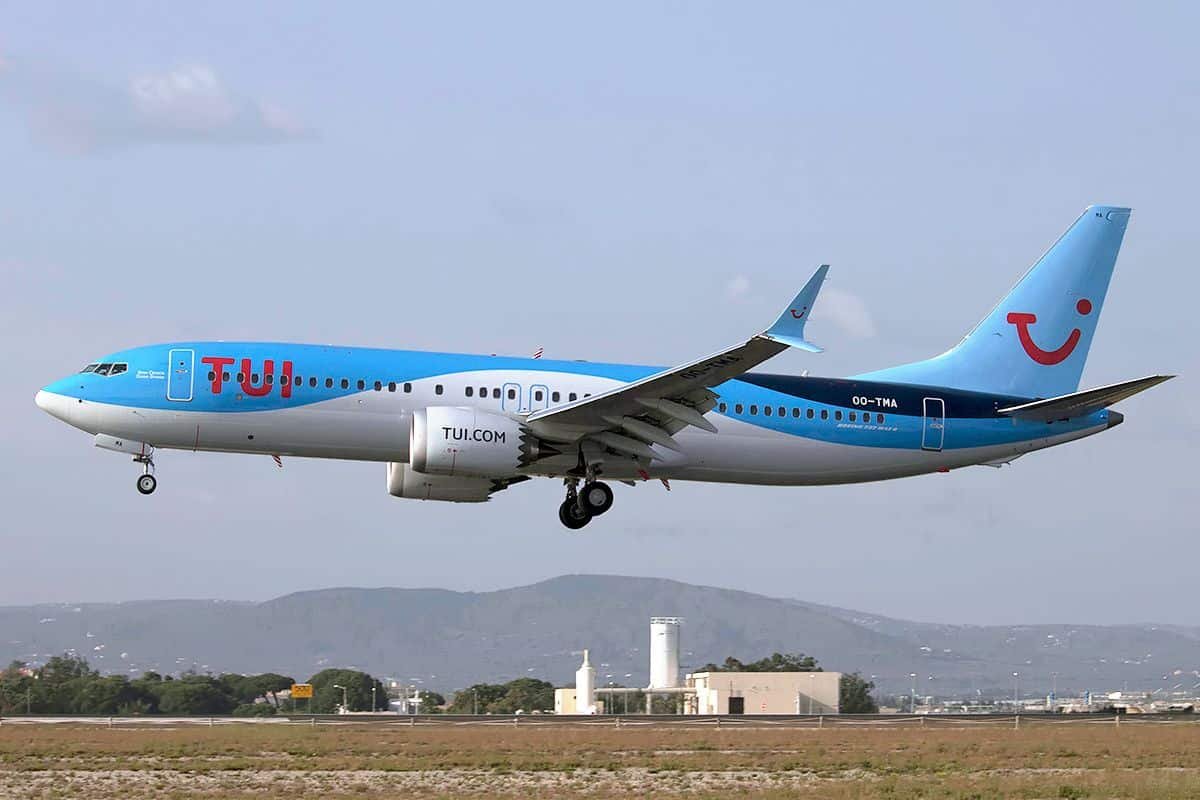After a six-year pause, TUI Fly, a Dutch charter airline associated with the German TUI Group—one of the largest tour operators globally—has resumed its weekly flights to Kenya. This resumption of flights to Mombasa’s Moi International Airport is seen as a promising step toward reviving Kenya’s coastal tourism sector, which has faced challenges from the global pandemic and travel disruptions. This move reconnects Kenya’s popular coastal destinations with European tourists, particularly from Northern Europe, enhancing the accessibility of renowned beach spots like Diani, Nyali, and Watamu.
TUI’s Impact on Kenya’s Tourism Economy
The re-establishment of TUI’s flights to Kenya is significant for multiple reasons. TUI Group’s reputation as a leading tour operator positions it as a major influencer in international travel patterns, and its interest in Kenya reflects the growing appeal of East African tourism. By reopening these flights, TUI is expected to stimulate Kenya’s tourism economy, particularly benefiting hotels, resorts, and small businesses along the coast that rely heavily on European tourists.
TUI Fly’s return provides much-needed direct connectivity between Mombasa and key European cities, encouraging tourism and economic growth. This new wave of incoming tourists is expected to significantly boost Kenya’s hospitality industry, especially as the country continues to recover from the adverse impacts of the pandemic on global travel. For coastal destinations that previously relied on frequent visits from Europeans, the absence of TUI’s flights during the six-year period was particularly challenging.
Kenya’s Coastal Attractions: A Magnet for European Tourists
Kenya’s coastal region offers a range of attractions, from pristine beaches to national parks and rich cultural heritage sites. Mombasa, Kenya’s second-largest city, is famed for its white sand beaches along the Indian Ocean, attracting thousands of international visitors every year. Nearby Diani Beach, known for its crystal-clear waters and vibrant marine life, is another popular destination among European travelers, as is Nyali, which offers a unique blend of natural beauty and luxurious accommodations.
Beyond the beaches, the coastal region is home to several national parks, including Tsavo East and Tsavo West, which are famous for their diverse wildlife. European tourists, especially those interested in safari experiences, are drawn to these parks, where they can witness Africa’s “Big Five” and explore Kenya’s unique landscapes. The combination of beach relaxation and wildlife adventure has always been an appealing factor for European travelers, making Mombasa an ideal gateway for tourists looking to experience both aspects of Kenyan tourism.
The Economic Impact of TUI’s Return
The return of TUI Fly’s flights is expected to have far-reaching economic implications. First and foremost, the influx of European tourists is anticipated to bring increased revenue for local hotels, resorts, and safari lodges. As tourism demand rises, the hospitality industry will likely see higher occupancy rates and potentially extended stays, further benefiting local economies.
Additionally, the renewed air link creates job opportunities, especially in transport, dining, entertainment, and other tourism-related services. Increased visitor spending from European tourists will also stimulate investment in tourism infrastructure. Local entrepreneurs are likely to see new business opportunities, while existing businesses could expand their offerings to cater to the anticipated influx of tourists.
Potential New Resort Development in Watamu
The TUI Group’s interest in the Kenyan coast extends beyond flights, as reports suggest that TUI may explore setting up a resort in Watamu, a small coastal town known for its coral reefs and marine parks. Watamu is increasingly seen as a promising destination, and establishing a resort would reinforce its position on the tourist map.
Watamu, like other coastal towns, offers diverse attractions, including water sports, snorkeling, and diving opportunities in its marine parks. If TUI sets up a dedicated resort here, it could stimulate further tourism and possibly draw other major tour operators to invest in Kenya’s coastal areas. Additionally, it could increase job creation and infrastructure development in Watamu, benefiting both the local community and Kenya’s broader tourism industry.
Strengthening Kenya’s Tourism Sector Post-Pandemic
The revival of TUI’s flights aligns with Kenya’s efforts to strengthen its tourism sector in a post-pandemic environment. The tourism industry in Kenya, which contributes approximately 10% to the national GDP, was severely impacted by the global travel restrictions, with revenues dropping by nearly 80% during the peak of the pandemic. Reopening direct international routes to Mombasa could help restore tourist numbers to pre-pandemic levels, assisting Kenya in its recovery efforts and stabilizing the livelihoods of many locals who depend on tourism.
The European market remains one of the most crucial sources of tourism for Kenya, with visitors drawn to the unique blend of beach and safari experiences the country offers. As travel picks up again, tourists are looking for new, safe, and attractive destinations, and Kenya’s coastal region has a strong appeal. Increased tourism will not only help existing businesses but also attract new investments in infrastructure, such as upgraded airport facilities, expanded hotel capacity, and enhanced transportation networks.
Tourism Infrastructure and the “Open Skies” Policy
The reactivation of TUI Fly’s flights also brings attention to Kenya’s ongoing debate on the “open skies” policy, which seeks to liberalize air travel and allow more international airlines to operate in the country. Advocates of this policy argue that increased competition from foreign airlines could make flights to Kenya more affordable and accessible, potentially increasing the number of tourists visiting the country.
Currently, Kenya Airways, the national carrier, dominates many of the country’s major routes. However, Kenya Airways’ limited fleet and coverage restrict the number of direct flights to Kenya from Europe and other parts of the world. The open skies policy, if implemented, could encourage airlines like TUI Fly to operate more routes and increase flight frequency, making it easier and cheaper for tourists to access Kenya.
While the national airline has been resistant to the open skies policy, arguing that it could threaten its market share, tourism stakeholders see it as a critical step toward revitalizing the industry. Increased competition could bring down travel costs, making Kenya a more attractive destination for budget-conscious travelers. If Kenya pursues the open skies policy, TUI’s move could set a precedent for other international airlines to enter the market, potentially transforming the landscape of Kenya’s aviation and tourism sectors.
Challenges and Future Prospects
Despite the promising outlook, TUI’s return to Mombasa also highlights challenges within Kenya’s tourism sector. Infrastructure limitations, high operational costs, and seasonal fluctuations in tourism demand pose ongoing hurdles for the industry. Addressing these issues will be key to ensuring sustainable growth and maintaining Kenya’s appeal as a tourist destination.
Furthermore, Kenya’s coastal tourism faces competition from other destinations in the region, such as Tanzania’s Zanzibar and South Africa’s Cape Town, which also attract European tourists. To compete effectively, Kenya needs to strengthen its marketing efforts, promote eco-friendly tourism, and ensure that its destinations remain accessible, safe, and attractive to international visitors.
Conclusion
The return of TUI Fly to Mombasa after six years marks an encouraging development for Kenya’s tourism industry. As one of the world’s leading tour operators, TUI’s decision to re-establish flights signals confidence in Kenya’s tourism potential and reflects the country’s unique appeal for European travelers. This move promises not only to revive the local economy but also to create new job opportunities, stimulate investment, and strengthen Kenya’s position as a premier destination in East Africa.
By reopening direct routes to Mombasa, TUI Fly brings Kenya’s coastal tourism back into focus, allowing tourists from Europe to once again explore the beaches, parks, and cultural treasures of the region. The broader economic impact of this move will likely extend beyond tourism, bolstering local businesses, creating employment, and positioning Kenya for continued growth in the global travel market. The challenge now is for Kenya to build on this momentum, address infrastructure limitations, and continue to develop a tourism sector that benefits both the country and its visitors.
Ready to take your career to the next level? Join our dynamic courses: ACCA, HESI A2, ATI TEAS 7 and HESI EXIT !🌟 Dive into a world of opportunities and empower yourself for success. Explore more at Serrari Ed and start your exciting journey today! ✨
photo source: Google
By: Montel Kamau
Serrari Financial Analyst
11th November, 2024
Article, Financial and News Disclaimer
The Value of a Financial Advisor
While this article offers valuable insights, it is essential to recognize that personal finance can be highly complex and unique to each individual. A financial advisor provides professional expertise and personalized guidance to help you make well-informed decisions tailored to your specific circumstances and goals.
Beyond offering knowledge, a financial advisor serves as a trusted partner to help you stay disciplined, avoid common pitfalls, and remain focused on your long-term objectives. Their perspective and experience can complement your own efforts, enhancing your financial well-being and ensuring a more confident approach to managing your finances.
Disclaimer: This article is for informational purposes only and does not constitute financial advice. Readers are encouraged to consult a licensed financial advisor to obtain guidance specific to their financial situation.
Article and News Disclaimer
The information provided on www.serrarigroup.com is for general informational purposes only. While we strive to keep the information up to date and accurate, we make no representations or warranties of any kind, express or implied, about the completeness, accuracy, reliability, suitability, or availability with respect to the website or the information, products, services, or related graphics contained on the website for any purpose. Any reliance you place on such information is therefore strictly at your own risk.
www.serrarigroup.com is not responsible for any errors or omissions, or for the results obtained from the use of this information. All information on the website is provided on an as-is basis, with no guarantee of completeness, accuracy, timeliness, or of the results obtained from the use of this information, and without warranty of any kind, express or implied, including but not limited to warranties of performance, merchantability, and fitness for a particular purpose.
In no event will www.serrarigroup.com be liable to you or anyone else for any decision made or action taken in reliance on the information provided on the website or for any consequential, special, or similar damages, even if advised of the possibility of such damages.
The articles, news, and information presented on www.serrarigroup.com reflect the opinions of the respective authors and contributors and do not necessarily represent the views of the website or its management. Any views or opinions expressed are solely those of the individual authors and do not represent the website's views or opinions as a whole.
The content on www.serrarigroup.com may include links to external websites, which are provided for convenience and informational purposes only. We have no control over the nature, content, and availability of those sites. The inclusion of any links does not necessarily imply a recommendation or endorsement of the views expressed within them.
Every effort is made to keep the website up and running smoothly. However, www.serrarigroup.com takes no responsibility for, and will not be liable for, the website being temporarily unavailable due to technical issues beyond our control.
Please note that laws, regulations, and information can change rapidly, and we advise you to conduct further research and seek professional advice when necessary.
By using www.serrarigroup.com, you agree to this disclaimer and its terms. If you do not agree with this disclaimer, please do not use the website.
www.serrarigroup.com, reserves the right to update, modify, or remove any part of this disclaimer without prior notice. It is your responsibility to review this disclaimer periodically for changes.
Serrari Group 2025












